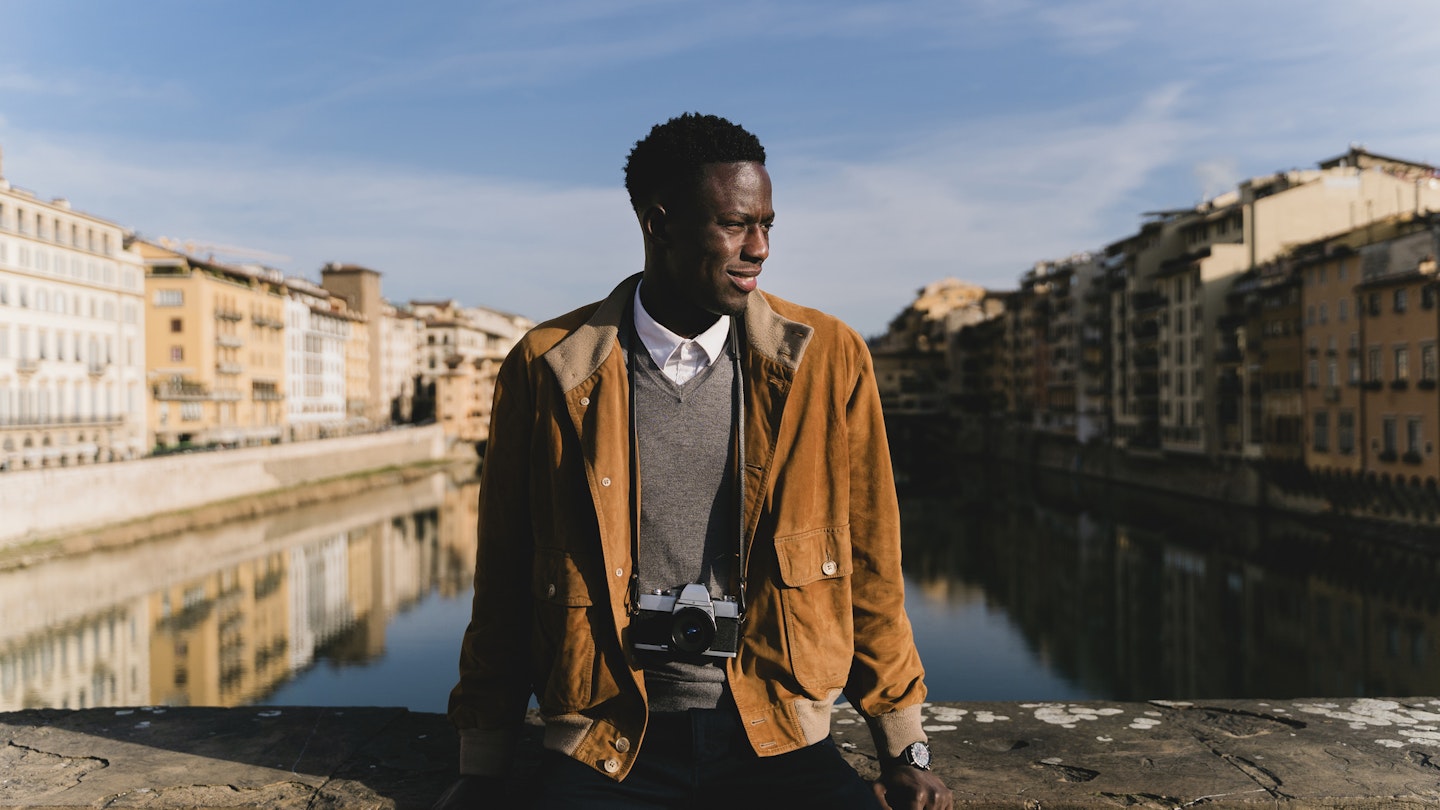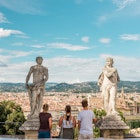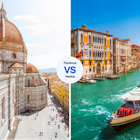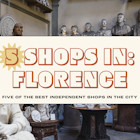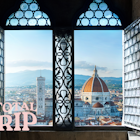Small as it is, Florence looms large on the world's 'must-sees' list – primarily for its positively indecent treasure chest of Renaissance art.
With priceless statues, sculptures and architecture to rival the finest Botticelli littering practically every street corner, the Tuscan city is a living museum and its fine institutions make a great day out, anytime of the year. When you fancy a real museo, these are our favorites.
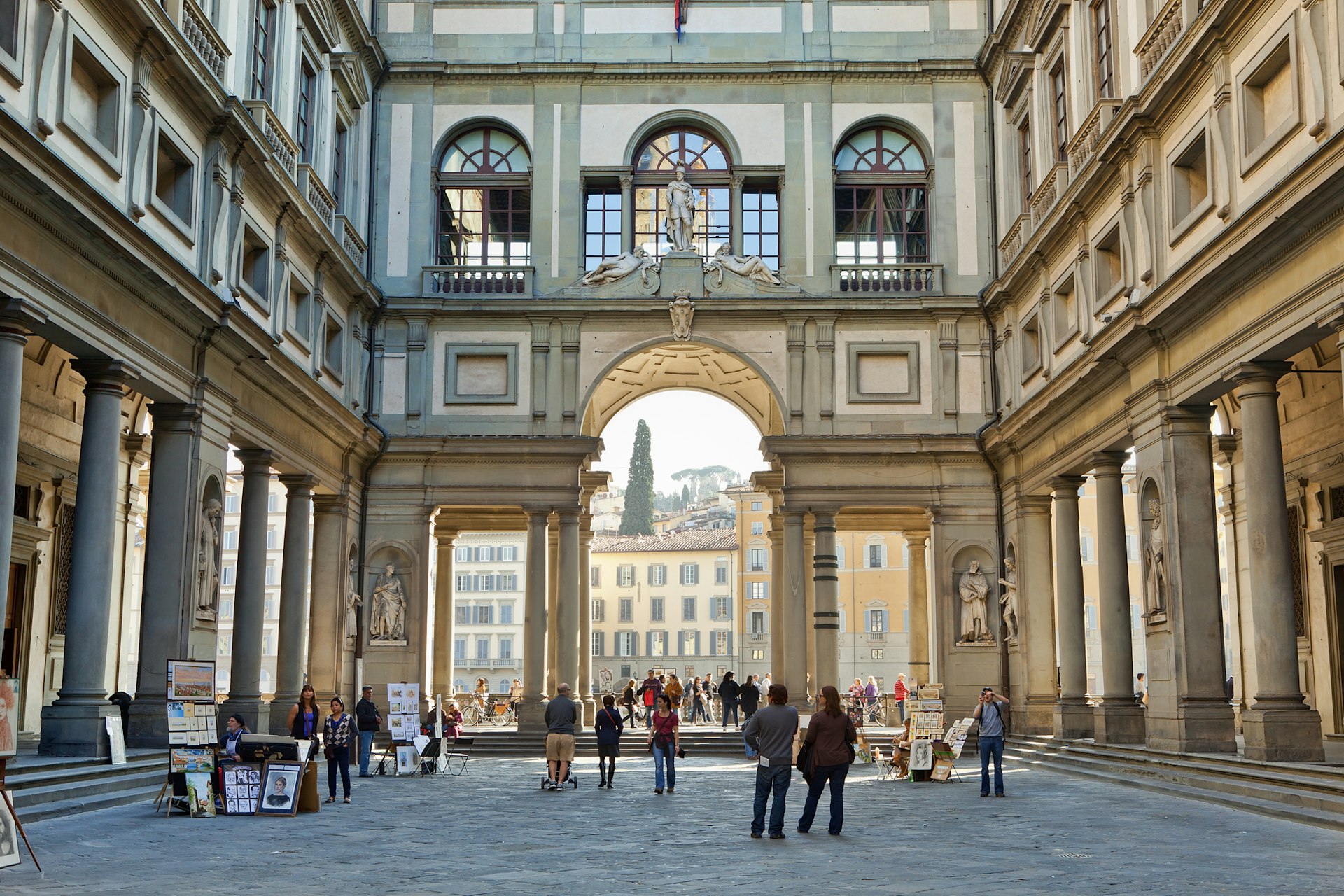
Galleria degli Uffizi: best Italian Renaissance art
This world-class art museum is a Florentine rite of passage. Lapping up the energizing vibe – buskers, mime artists, singers, selfie-wheeling tourists – in the elongated courtyard by the entrance is as much part of the experience as losing yourself in the 16th-century palace’s gargantuan maze of 100-odd rooms.
The gallery spans Ancient Greece to 18th-century Venice, but its USP is the world’s largest collection of Italian Renaissance art. Quirks include the Corridoio Vasariano, a 1km-long elevated passageway linking the Uffizi with Palazzo Pitti across the river (to open May 2022); and the sustainability-driven Uffizi Diffusi project which is ‘scattering’ Uffizi masterpieces across less-trodden galleries in Tuscany to a bid to share Florence’s heavy tourist load.
Manifattura Tabacchi: best ‘non-museum’
Convention flies out the window at this contemporary arts center, an exciting regeneration project inside a 1930s tobacco-processing plant and cigarette factory near the main city park. Counter-culture art, fashion and design exhibitions in its rolling NAM (Not a Museum) arts program are a brilliant antithesis of anything you’ll ever see in Florence’s ancient centro historico (historical center); pockets of the massive complex could be a street-art museum.
Experiential exhibits in some of the 16 hangars already restored – Manifattura Tabacchi is very much a work-in-progress – include cutting your own 4-minute vinyl or USB key in a factory elevator-turned-studio, arts-and-crafts workshops led by resident creatives, and craft-beer sessions. Architecture buffs, note: the complex is a sensational example of Italian Rationalist architecture. Watch for more edgy spaces to open in 2022, including central hub The Factory.

Museo delle Capelle Medicee: best Medici bling
For serious glitzy razzle-dazzle hit the Medici Chapels Museum, the burial place of the Medici dynasty since 1429. So excessive is the Medici bling, it’s hard not to ogle in disbelief at the conceited riot of polychrome marbles, granite and glittering semi-precious stones adorning the funerary tombs in the mausoleum and crypts. No less than 49 dynasty members are buried here, a trio of which slumber in the shadow of haunting, voluptuous funerary sculptures depicting Dawn and Dusk, Night and Day and Madonna and Child by Renaissance maestro Michelangelo.
If you're looking to save some euros in Florence, get the 72hr-pass covering entry to the Capelle Medicee, Museo del Bargello, Palazzo Davanzati, Casa Martelli and unusual church-turned-grain market Chiesa e Museo di Orsanmichele.
Museo degli Innocenti: best post-museum drinks
It’s impossible for your curiosity not to be piqued by the shiny sky-blue, glazed-terracotta medallions of swaddled babies peppering the facade of Florence’s former Ospedale degli Innocenti. The round arches and Roman capitals designed by Brunelleschi (yes, of cathedral cupola fame) in 1421 make this the first Renaissance building in Florence. Inside, state-of-the-art museum exhibits bring to life the moving tale of Florence’s foundling hospital – and later Europe's first orphanage – where unwanted children were cared for from 1421 until 1875.
End with coffee or an aperitivo as the sun turns the city pink on the panoramic terrace of the museum’s gorgeous rooftop Caffé del Verone, the hospital’s verone (drying room) where washed linen was hung to dry. You're in a great neighborhood for exploration too: Michelangelo's David is a five-minute walk away.

Galleria dell’Accademia: best celebrity nudes
One of the top reasons people come to Florence, a queue often marks the door to this gallery, purpose-built to house the world’s most famous nude (buy tickets in advance online to cut queue time). Any wait is worth it. Michelangelo sculpted David from a single block of marble in 1501-04 and the subtle detail – the veins in his sinewy arms, the leg muscles, the change in expression as you pace around the statue – is bewitching.
Closeup, there is no denying the nude boy warrior's incongruously large head and hands, and small penis. The 5.2m-tall sculpture (17ft) was originally intended to stand up high on a cathedral buttress in the apse, from where his head and hands would have appeared in perfect proportion. Why the small penis? In classical art a large or even normal-sized packet was not deemed elegant, hence the daintier size. Michelangelo’s unfinished Prigioni (Prisoners; 1523-23) are other nudes worth contemplation.
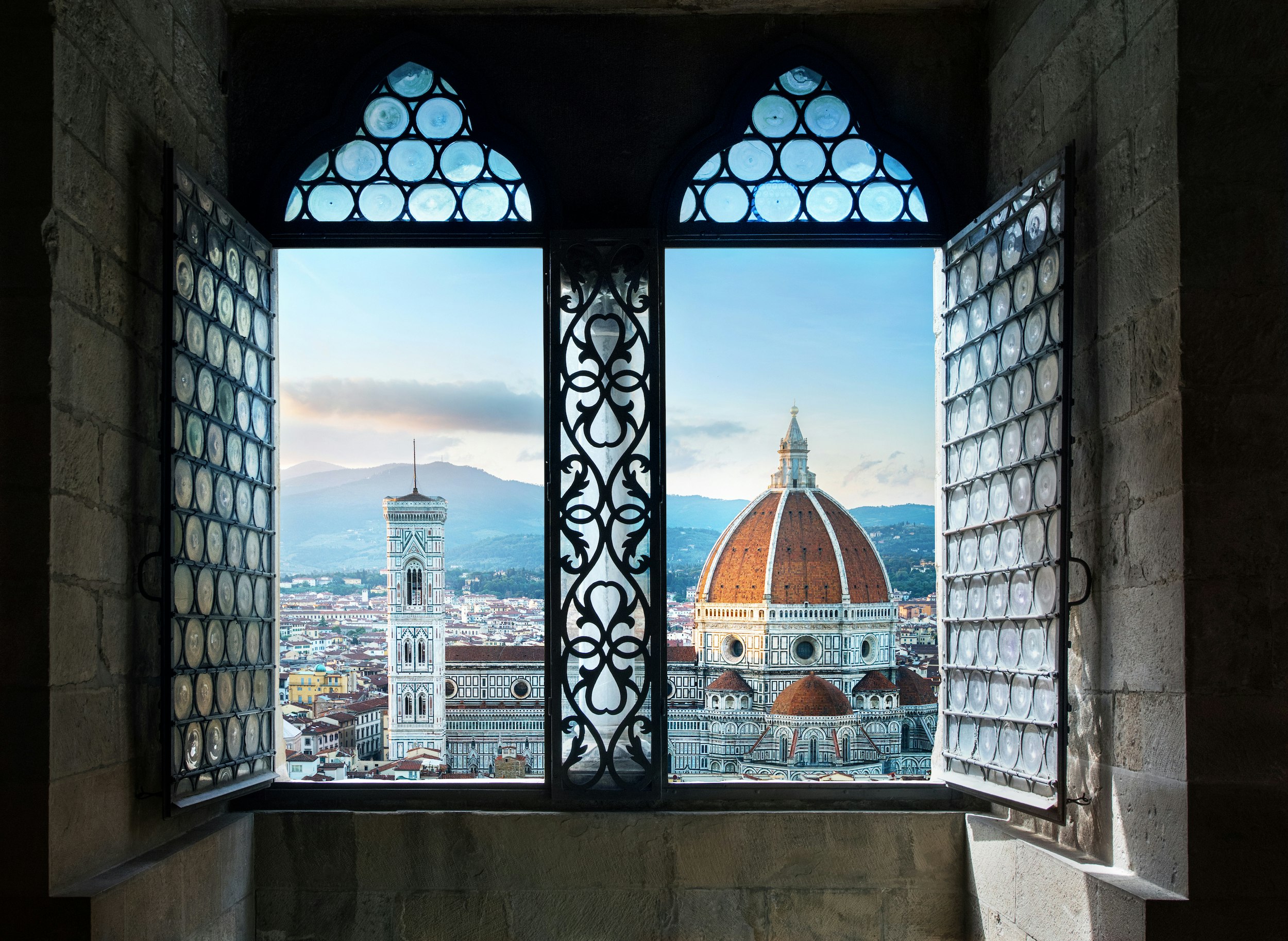
Museo dell’Opera del Duomo: best for cathedral history
No museum provides such gargantuan insight and essential background into Florence’s celebrity cathedral complex starring the Duomo with its iconic flame-red cupola (don’t miss the climb inside), standalone bell tower and baptistery. The awe-inspiring story is told through a mesmerizing collection of priceless sacred and liturgical treasures – this is as much a showcase of extraordinary Florentine craftsmanship as a history lesson.
Just in case you haven't seen enough of it while getting around Florence, a spectacular life-sized reconstruction of the duomo’s original facade, ripped down in the 16th century, looms large in the main hall. The restored, 14th- and 15th-century gilded-bronze doors from the baptistery, carved in mind-blowing detail to illustrate biblical tales, take your breath away. Further in the museum, Michelangelo's powerfully emotive La Pietà – sculpted when he was almost 80 and intended for his own tomb – is a complete heartbreaker.
Palazzo Strozzi: best for families
Whether you have art-curious kids or not, the attention-grabbing contemporary art at this 15th-century Renaissance palazzo captures everyone’s interest. Themed hands-on workshops and tours aimed squarely at families accompany each blockbuster exhibition: immersive games, activities and imaginative narratives plunge families into the vibrant world of Jeff Koons, modern American artists, contemporary French artist JR, all sorts.
Strozzi’s elegant interior courtyard is a trendy spot to linger with locals and the café-bar beneath its arches is a buzzy spot for coffee, Tuscan wine, cocktail-fueled aperitivi and the finest iced cappuccino in town.
Museo Villoresi: best for artisan craftsmanship
Adding a heady note to any museum day, the Museo Villoresi explores the world of artisanal perfumery with interactive digital exhibits, olfactory booths, short films and a scent library. Intimate tours (book in advance online) end in a gloriously sweet-smelling terrace garden, perfumed with 80 different types of aromatic plants, trees and herbs – lemons, bergamot, yuzu, roses, jasmine, frangipane, laurel, olive, cypress and iris.
The museum is at home in the 15th-century family palazzo of Florentine perfumer Lorenzo Villoresi whose bespoke fragrances really do evoke the Tuscan countryside, garden and seaside – bottled in utterly irresistible, vintage-glass vaporizers for you to buy in the adjoining boutique and take home.
Safety recommendations and restrictions during a pandemic can change rapidly. Lonely Planet recommends that travelers always check with local authorities for up-to-date guidance before traveling during Covid-19.
You may also like:
Florence's most fantastic parks and gardens
The 10 best day trips from Florence
How to live like a local in Florence

